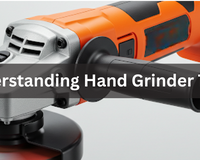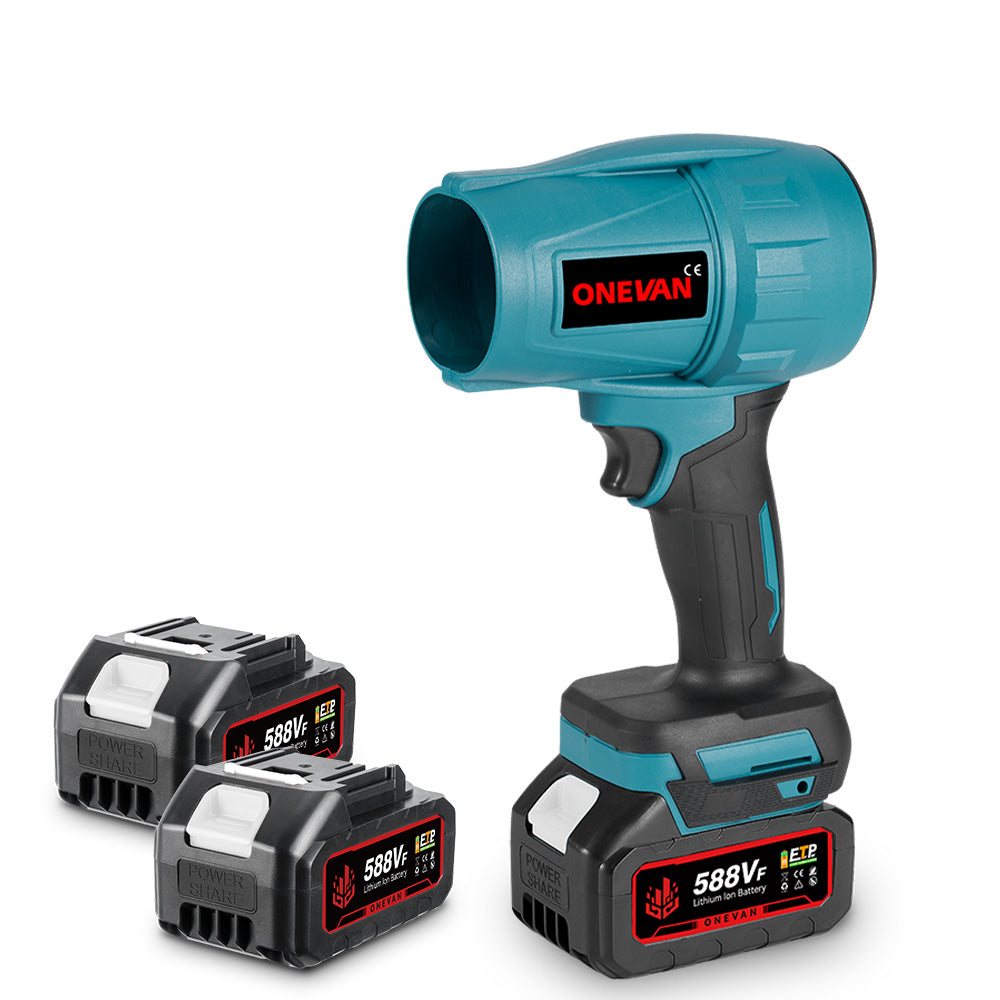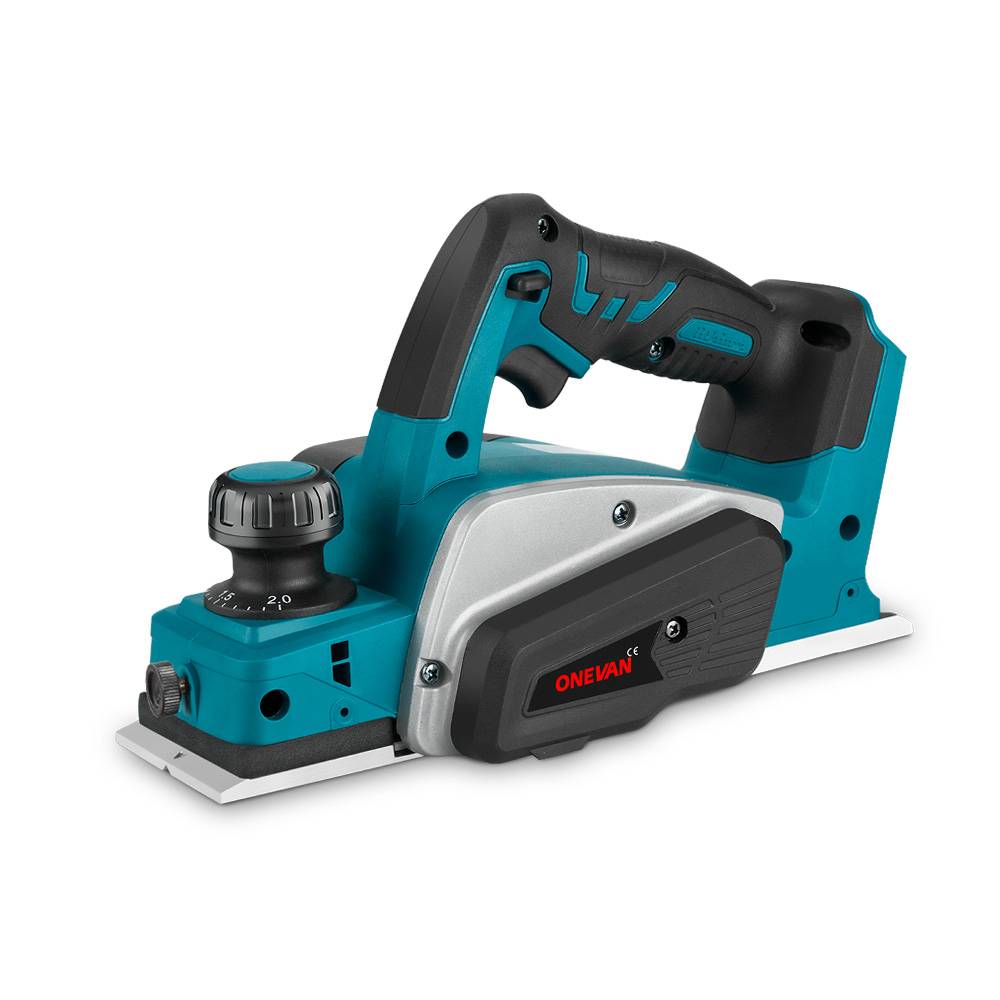Working with PVC pipes and sheets is a common task in many construction and industrial projects. A range of cutting tools is available for this versatile material. These tools include simple hand saws and specialised cutting tools. Among these options, the circular saw stands out as a powerful and efficient choice.
This article examines the use of circular saws for cutting PVC. It covers the properties of PVC and the advantages of using a circular saw. The article also details blade selection and the correct techniques for better safety and precision. Furthermore, it will address common problems. It will provide troubleshooting solutions to help you cut PVC effectively.
1. Understanding PVC
What is PVC?
Polyvinyl Chloride is a synthetic plastic polymer. It is produced in two primary forms. These forms are rigid and flexible. Rigid PVC, often referred to as unplasticized polyvinyl chloride (PVC-U), is a dense and hard material. This type is widely used in construction for:
- Pipes
- Window frames
- and siding.
Flexible PVC is created by adding plasticisers. This process makes the PVC softer and more pliable. The major applications include electrical cable insulation, flooring, and inflatable structures. You will find the most common uses of PVC in construction, plumbing, and DIY projects.
Properties of PVC
PVC possesses several characteristics that make it a valuable material. It exhibits high durability. It also shows resistance to environmental degradation and chemical corrosion. Subsequently, it is lightweight in nature, making it easy to transport and handle on a job site. These properties are crucial to consider when selecting a cutting method.
For example, PVC is a thermoplastic. This means it softens and melts when heated. This property influences the choice of circular saw blade and cutting speed. The goal is to avoid melting the material instead of cutting it cleanly. An awareness of its rigidity and potential to chip dictates the need for proper support during the cutting process.
2. Can You Cut PVC with a Circular Saw?
Can Circular Saws Cut PVC?
Circular saws are certainly capable of cutting through PVC. The power and high rotational speed of a circular saw blade allow it to cut the material quickly and cleanly. On the other hand, manual saws rely on physical force and can be slow.
A circular saw performs its work with the help of its motor. This makes it an effective tool for cutting all types of PVC. For instance, it can cut everything from thin-walled pipes to thick PVC boards. Successful cutting of PVC with a circular saw requires using the correct blade and implementing effective safety measures to achieve clean, accurate cuts. The key to achieving a clean and accurate cut lies not only in the circular saw itself but also in pairing it with an appropriate blade specifically designed for cutting plastic materials smoothly.
The Advantage of Cutting PVC with a Circular Saw
Utilising a circular saw for cutting PVC offers several distinct benefits. These advantages make it a preferred method for many professionals and hobbyists.
Speed and Efficiency
The primary advantage is speed. A circular saw can complete a cut in seconds. The same cut can take several minutes with a handsaw. For projects such as plumbing installations or construction work that involve multiple cuts, this efficiency can save a significant amount of time and labour.
Versatility
A circular saw is a versatile tool. You can simply change the blade. Then, the same circular saw can be used for cutting wood, composite materials, and plastics, such as PVC. This adaptability makes a tool like the ONEVAN 180mm7 Inch Brushless Cordless Circular Saw a valuable asset in any workshop. It can perform straight cross-cuts, long rip cuts, and even angled bevel cuts with precision.
Precision and Accuracy
A circular saw delivers exceptionally straight and accurate cuts when paired with a straightedge guide and a rip fence. Achieving this level of precision is challenging with freehand methods. It is critical for applications where pieces must fit together perfectly, such as in framework or trim installation.
Reduced Chipping and Splintering
A fine-toothed blade spinning at high RPMs shears the plastic rather than tearing it. This action, when using the appropriate fine-toothed blade, results in a much cleaner edge with minimal chipping compared to the potentially rougher finish left by coarser blades when misused.
Ability to Cut Thick Material
Circular saws excel at cutting through thick or dense PVC materials. They can handle large-diameter, thick-walled schedule 80 pipe or solid PVC sheets. The power of a circular saw can provide consistency in cutting speed and efficiency, making it especially useful for larger cutting jobs. However, skilled manual cutting can also achieve excellent results in the hands of experienced users.
Minimal Physical Effort
Using a circular saw requires guiding the tool. It does not require you to provide the force for the cut. This point is important. It significantly reduces physical fatigue. This allows the user to work longer and maintain better control. Better control ultimately leads to safer and more accurate work.

Best Circular Saw Blade for Cutting PVC
Certain features are particularly beneficial when you select a circular saw for cutting PVC. You can’t ignore the power factor. A circular saw with a higher amperage motor or higher voltage will maintain blade speed under load. This prevents binding and melting. Blade size determines the maximum depth of cut. A 7-1/4 inch circular saw is a common and versatile choice. When choosing between a corded and cordless model, consider factors such as the available power sources at the job site, the cut length required, and the portability needs for the specific task.
Corded circular saws offer continuous power. Cordless circular saws, such as the ONEVAN 180mm Brushless Cordless Circular Saw, offer excellent portability for job sites without easy access to power outlets.
Selecting the Right Blade
The blade is the most critical component for achieving clean cuts in PVC. Using a blade designed for wood can lead to rough edges, chipping, and melting.
Fine Toothed Blades
These blades have a high tooth count. They often have over 60 teeth for a 7-1/4 inch blade. The greater number of teeth means each tooth removes a smaller amount of material. This results in a smoother, finer finish with less chance of chipping the plastic.
Triple Chip Grind Blades
A TCG blade features a specific tooth pattern. It alternates between a flat-topped "raker" tooth and a higher "trapeze" tooth. The taller tooth makes a rough initial cut. The following rake tooth cleans it up. This design is exceptionally effective at cutting hard plastics and laminates without chipping.
Cross-Cut Blades
These blades often feature an Alternate Top Bevel (ATB) tooth design. They are made for clean cuts in wood. An ATB blade with a high tooth count can also work well for PVC. It provides a clean shearing action that minimises tear-out.
Panel Saws and Track Saws Blades
These systems are designed for cutting large sheets of material with high precision. The blades used are typically fine-toothed. They are optimised to produce a finish-quality edge on materials like PVC panels. This makes them an excellent but more specialised option.
3. Techniques for Cutting PVC with a Circular Saw
Safety Considerations
Your safety should always be your primary consideration when using a power tool. PPE is critical and cannot be overemphasised. It also includes safety glasses to prevent your eyes from plastic particulates. Always wear a dust mask or respirator to avoid inhaling PVC dust, which can be harmful to your health.
Gloves can help provide you with a better grip and protect your hands. Note: PVC cuts may produce fumes as the material melts due to friction. This is why working in a ventilated space is so important.
Preparing to Cut
Proper preparation is essential for a successful cut. Firstly, measure the PVC carefully. Use a fine-tipped permanent marker specifically designed for plastic to draw a clear, precise cut line that won’t smudge during the cutting process.
Secondly, the material must be firmly secured to a workbench or sawhorses using clamps. This prevents the workpiece from moving during the cut. Movement is a primary cause of inaccurate cuts and dangerous kickback. For pipes, a V-block or a pipe vice is highly effective at preventing rotation.
Finally, set the blade depth on your circular saw to the thickness of the material plus approximately 1/4 inch to minimise the risk of kickback and ensure a clean cut. Always verify the material thickness for accuracy first. This setting ensures only one full tooth is exposed below the workpiece.
Step-by-Step to Cut PVC with a Circular Saw
Following a systematic process ensures both safety and quality.
Be Ready
Put on all necessary Personal Protective Equipment. For example, wear ANSI-rated safety glasses to protect your eyes from sharp plastic chips that can be ejected at high speed. A dust mask is also important for avoiding the inhalation of fine PVC dust particles.
Mark and Secure
Feel for it and draw a straight cut line. For a crisp line without smudging, try using a fine-point permanent marker. Then you clamp in the PVC part. For example, if you are cutting through a 2-inch pipe, clamp it in a V-block on top of your workbench using C-clamps. This will prevent the pipe from rolling or vibrating as you cut.
Set Up the Saw
Make sure your fine-tooth blade is in correct and tight. Adjust the blade depth so it cuts a quarter inch below your material if you plan to cut 3/4 in. PVC board, for instance, requires your circular saw's blade to be about an inch out from the base panel. That eliminates blade exposure and the risk of kickback.
Position for the Cut
Align the circular saw blade with the waste side of your cut line. This means the blade itself will remove the material you do not need, leaving your final piece at the exact measured length. Rest the front of the circular saw's flat base plate firmly on the material, holding the blade clear of the edge before you start.
Start the Saw
Squeeze the trigger and allow the blade to reach its maximum rotational speed. Bringing a blade at full speed into the material ensures a clean entry cut. Attempting to start the circular saw while the blade is touching the PVC will cause it to grab and chip the edge of the PVC.
Execute the Cut
Guide the circular saw forward along the cut line with a steady, smooth motion. Do not force the circular saw; let the blade's speed do the work. Listen to the motor. A consistent hum means your feed rate is good. If the motor begins to bog down or strain, you are pushing too fast.
Complete the Cut
Continue pushing the circular saw smoothly through the entire material. Make sure the offcut piece has a clear space to fall away. Ensure that larger offcut pieces are properly supported to prevent them from sagging or snapping off prematurely, which can cause the blade to bind at the end of the cut.
Power Down
Let go of the trigger and hold the circular saw in place until the blade comes to a complete stop. Otherwise, you would then release the circular saw from entering the cut. You don't want to raise the circular saw with a spinning blade touching material, as a slow spin can get caught up in the edge and pop in unpredictable ways.
Achieving Clean PVC Cuts with a Circular Saw
Achieving clean plastic cuts depends on several key factors. A sharp blade is the most important tool. A dull blade can tear and melt the plastic, leading to a messy, uneven cut instead of a clean shear.
The cutting speed, or feed rate, is also critical. A steady, moderate speed generally gives the best results. Moving too slowly can cause the plastic to melt. Conversely, moving too quickly can result in excessive chipping.
To address chipping, use a fine-toothed blade and maintain the correct feed rate. For an even cleaner edge, you can apply painter's tape along the cut line. This helps support the plastic fibres and reduces chipping.
4. Troubleshooting Common Issues When Cutting PVC with a Circular Saw
You may encounter issues even with preparation. Understanding the causes can help you resolve them quickly.
a) Chipping / Splintering
Possible Causes
The blade may be dull or have too few teeth (a low TPI). The feed rate may be too fast, causing the blade to force its way through the material. The workpiece can not be properly supported.
Troubleshooting Steps
Replace the old blade with a new, sharp one – designed for fine finishes or plastics. Give a higher tooth count blade a try. Slow down your feed, steer the circular saw more slowly. Ensure that the PVC is held tightly and supported on both sides of the cut.
b) Melting of PVCEdges
Possible Causes
It is a typical indication of too much heat caused by friction. A dull knife is often the perpetrator. A feed rate that is too low allows the blade to hang up in the cut, creating excessive heat. An improper blade type, like an abrasive wheel, can also contribute to melting.
Troubleshooting Steps
First, determine if the blade is sharp. The less friction there is, the smoother the blade cuts. Increase the feed rate slightly to expedite the blade's passage through the material. Verify you are using a toothed blade and not an abrasive disc.
c) Inaccurate Cuts
Possible Causes
The workpiece may have shifted because it was not clamped down. The cut can be wavy if you are not using a guide. Trying to steer the circular saw to correct its path mid-cut can also lead to inaccuracies.
Troubleshooting Steps
Always secure the workpiece firmly with clamps. For perfectly straight cuts, clamp a straightedge, level, or speed square to the workpiece to ensure accuracy. This will serve as a fence for the circular saw to run against. Guide the circular saw steadily and let it follow the path set by the fence. A reliable tool, such as a ONEVAN 125mm Brushless Cordless Circular Saw, can help maintain a consistent cutting path.
d) Unstable Cutting
Possible Causes
The instability often comes from the workpiece itself. This can happen if it is not supported on both the main part and the offcut side. Cutting on an uneven or unstable surface can also cause problems.
Troubleshooting Steps
Use sawhorses or a stable workbench. Ensure that you support the section of material that will be cut off. This prevents it from sagging and binding the blade toward the end of the cut.
e) Excessive Dust Production
Possible Causes
The nature of cutting plastic with a power tool will inevitably create dust. This issue is exacerbated in an enclosed space without ventilation.
Troubleshooting Steps
Always wear a dust mask. If your circular saw has a dust port, connect it to a shop vacuum for active dust extraction. Whenever possible, perform cutting operations outdoors.
f) Bending or Warping During Cutting
Possible Causes
Heat buildup from a dull blade can soften the PVC, causing it to warp and deform. Similarly, if the blade binds in the cut, the force can deform the material. This is especially true on thinner sheets. A lack of support for long pieces can also cause them to sag and bend.
Troubleshooting Steps
Use a very sharp blade to minimise friction and heat. Ensure your cutting technique is smooth to prevent the blade from binding. Support long pieces of PVC along their entire length. This will prevent them from sagging under their own weight.
5. Alternatives to Circular Saws for Cutting PVC
A circular saw is a great option. However, other tools may be better suited for specific tasks.
Other Cutting Tools for PVC Cutting
Jigsaws
A jigsaw is the ideal tool for making curved or irregular cuts in PVC sheets when equipped with a fine-toothed blade.
Handsaws
A simple handsaw, such as a hacksaw or a specialised PVC pipe cutter, can be effective for small numbers of cuts on PVC pipes, but may not provide the speed and efficiency of power tools in larger or more complex projects.
PVC Pipe Cutter
These shears or ratchets are great for making fast, clean cuts with no burrs on pipes up to 2 ".
mitre Saw
The most accurate way to make a perfect angled cut is by using a mitre saw. It is beneficial wherever tight-fitting joints are needed, such as in the construction of frames or jigs.
When to Use Alternatives to Cutting PVC
Tools are the instruments of the job. For a basic plumbing repair on a 1/2 inch PVC pipe, using a PVC pipe cutter is the easiest method. If you need to cut a circular hole in a PVC panel, a jigsaw is the best tool for the job.. If you have to make 30 or more identical square cuts on PVC trim, you should use a mitre saw. The handsaw excels in long straight cuts on sheets and fast cross-cuts in any size of pipe, whereas the circular saw is suitable for cutting considerable lengths along a length.
6. Conclusion
How do you cut PVC pipe with a circular saw? If done correctly, using a circular saw. With adequate power and speed, it delivers quick, precise cuts with clean edges when used in combination with the right toothy blade. Success depends on proper technique. Like pinwheels, having the correct blade depth and feed rate is also a factor to consider. Safety First: Always wear the correct protection, and work safely in a ventilated area. You can definitely use a circular saw on your PVC projects. You do this by first learning how PVC works, after which you proceed from there. As long as you follow the implementation procedure, you should encounter no trouble.
7. FAQs
Can I cut PVCwith any circular saw?
Most circular saws, whether corded or battery-powered, can be used to cut PVC. It's not the circular saw that really matters. The key is using the correct blade—one with a high tooth count, specifically designed for fine finishes or plastics.
How do I know which blade for PVC?
You want a high tooth count for your blade. For a 7-1/4", this translates into 60 TPI or greater. Plastic, laminate, or non-ferrous blades are most effective. A Triple Chip Grind (TCG) blade can be one of the better choices for a good finish without chips.
How best can a cordless chainsaw compare to a corded circular saw for cutting PVC?
These are tools made for entirely separate types of jobs. A circular saw is a power tool used for cutting various materials, including wood, masonry, plastic, and metal, and can be handheld or mounted to a machine. A chainsaw is a type of saw designed for cutting wood and logs. A chainsaw on a PVC is dangerous, man. It would also be a "shredded, incorrect cut," and those who know me know that I hate RGIII; he's the new-age 6 ft wonder QB, style over substance. When comparing a cordless circular saw to a corded circular saw for PVC, the former is portable, and the latter provides constant power.









